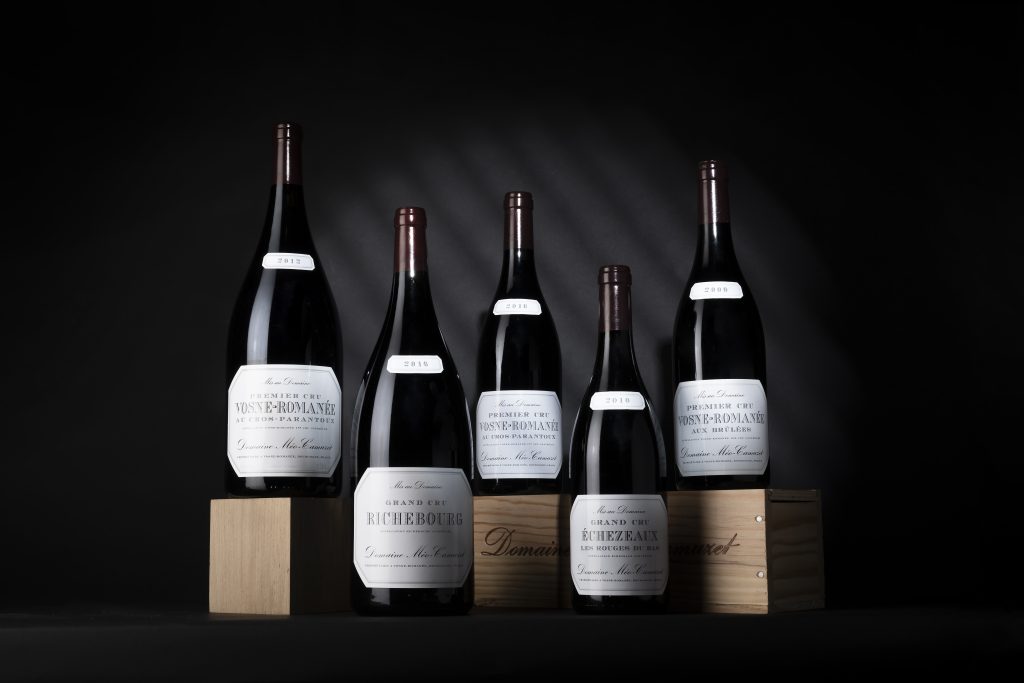This website uses cookies so that we can provide you with the best user experience possible. Cookie information is stored in your browser and performs functions such as recognising you when you return to our website and helping our team to understand which sections of the website you find most interesting and useful.
iDealwine partners with Burgundy producer Méo-Camuzet

The collection comprises 53 lots with a total estimated value of more than €100,000, and an average estimated bottle price of over €1,000.
The estate-owned collection comprises valuable Grand Crus from Richebourg and Echezeaux, as well as Premier Cru Vosne-Romanée Au Cros-Parantoux and Nuit-Saint-Georges. Some of the highlights of the sale include six bottles of Vosne-Romanée Premier Cru Aux Brûlées 2010 (estimate €7,860), Vosne-Romanée Premier Cru Au Cros-Parantoux 2011 magnum (estimate €5,450), Richebourg Grand Cru 2016 magnum (estimate €5,200), Richebourg Grand Cru 2005 (estimate €2,930) and Vosne-Romanée Premier Cru Les Chaumes, six Bottles of Vosne-Romanée Premier Cru Les Chaumes 2005 (estimate €2,640) from the “brilliantly sunny” 2005 vintage, that Jean-Nicolas Méo said was a great vintage for ageing. “It is far from the end of its journey,” he added.
Méo took over running the family domaine in Vosne-Romanée from his father as a young man, but with the guidance of legendary winemaker Henri Jayer, who produced wine on a neighbouring plot of land in Cros-Parantoux, he has built it into one the top producers in Burgundy.
Speaking to iDealwine about the vintage, he said the 2009 was a “great year, producing wines that express the typical characteristics of a warm vintage that has since evolved to gain more balanced”. Meanwhile the 2010 vintage had “a very good reputation” that shared similarities with 2005, “though perhaps displaying more finesse and a little less concentration”. The 2011, while “a less homogenous vintage than that of 2010 or 2012” gave pleasant wines “with beautiful texture and balance”.
- The 2012, represented by a Clos de Vougeot Grand Cru (magnum), Vosne-Romanée Premier Cru Au Cros-Parantoux (magnum), and Echezeaux Grand Cru, was a high-quality vintage – even though “it was not praised by critics for its true value”, Meo said. “This is a year which produced ripe wines without excessively high alcohol content. Therefore, the wines are concentrated but not overwhelming, displaying great finesse.”
- The 2013 vintage was “difficult”, being cold and late-ripening but as a result, the wines “retained a lot of the freshness and brilliance of the fruit. The vintage is guided by beautiful acidity, freshness of the fruit and a surprising softness,” he said.
- 2014: “A true vintage of balance, driven by its finesse and harmonious levels of maturity, acidity and tannin. However, these wines are not yet in their optimal tasting window and should be cellared for at least 2-3 more years.”
- 2015: This vintage “strikes the balance between concentration and tension as a warmer year which does not lack acidity. While some of these bottles could be enjoyed today, the Aux Brulées and Echezeaux should be aged for at least five more years.”
- 2016: “This is a vintage with beautiful chemistry that has a pleasant and joyful side to balance its riper profile. 2016 is pleasant to drink in its youth, however, it would certainly benefit from further ageing as well.
Méo also identified four ‘climats’ in Burgundy that deserved more attention: Aux Boudots and Aux Murgers in Nuits Saint Georges; and Corton Les Perrières and Corton Clos Rognet, in Corton.
Premier Crus Aux Boudots and Aux Murgers were “magnificent terroirs producing wines that are great for ageing,” he said, with Premier Cru Aux Boudots producing “wines whose delicate charm approaches the expressions of Vosne-Romanée” and Premier Cru Aux Murgers packing “a little more acidity and ageing potential”, being more “powerfully aromatic” with “a wild side balanced by their captivating freshness”.
Méo also argued that the terroir of Corton Les Perrières offered “plenty of minerality” whose “stony soil brings added finesse to temper its otherwise powerful and tannic structure” that required a bit of ageing. The 2010 presented in this auction still needed “a little more time”, he said. The Corton Clos Rognet, he noted “exudes natural opulence”.
“These wines are smooth and charming with controlled acidity, and yet they still age very well,” he said.” For the most patient collectors, they hold pleasant surprises which are only revealed with time.
Related news
Groupe Bollinger appoints new deputy CEO

